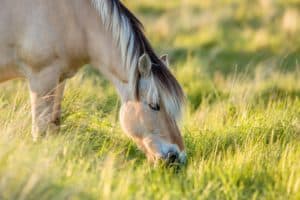Scientists Sleuth Forage Secrets
How do certain forage plants coax cattle, sheep and goats into coming back for more? Scientists at the USDA’s Agricultural Research Service are sleuthing the secrets of how to tempt the palates of these ruminants.
Knowing more about the
- Topics: Article, Pasture and Forages
How do certain forage plants coax cattle, sheep and goats into coming back for more? Scientists at the USDA’s Agricultural Research Service are sleuthing the secrets of how to tempt the palates of these ruminants.
Knowing more about the culinary cues should mean healthier animals that make better weight gains and bigger profits. Research studies should also help plant breeders develop new forages that appeal to animals, according to ARS soil scientist Henry F. Mayland. He leads the forage-preferences investigations at the agency’s Northwest Irrigation and Soils Research Laboratory in Kimberly, Idaho.
Earlier, Mayland and ARS colleagues Dwight S. Fisher at Watkinsville, Ga., and Joseph C. Burns at Raleigh, N.C., showed that cattle, sheep and goats prefer tall fescue hays harvested in the afternoon to tall fescues cut in the morning. Their study was likely the first to show up to a 50-percent difference in forage preferences based on time of cutting.
Now, follow-up studies by ARS scientists and their university colleagues are showing the same trend with alfalfa hay
Create a free account with TheHorse.com to view this content.
TheHorse.com is home to thousands of free articles about horse health care. In order to access some of our exclusive free content, you must be signed into TheHorse.com.
Start your free account today!
Already have an account?
and continue reading.
Written by:
Tim Brockhoff
Related Articles
Stay on top of the most recent Horse Health news with















